The inheritance of WW2
![]() The Polish Navy was re-established between 1945 and 1948 under vigilant supervision of the Soviet Union, with what was available at the time: The destroyer Błyskawica, but also three submarines, four minesweepers and two minesweepers acquired in Britain plus nine minesweepers, twelve patrol craft and a training tall ship, all Polish, plus three ex-British BYMS type minesweepers. To that collection, the USSR added twelve Submarine chasers, two MTBS in lieu of war reparations from the Kriegsmarine. When assembled they were insufficient for the defence of over 500 km of coastline.
The Polish Navy was re-established between 1945 and 1948 under vigilant supervision of the Soviet Union, with what was available at the time: The destroyer Błyskawica, but also three submarines, four minesweepers and two minesweepers acquired in Britain plus nine minesweepers, twelve patrol craft and a training tall ship, all Polish, plus three ex-British BYMS type minesweepers. To that collection, the USSR added twelve Submarine chasers, two MTBS in lieu of war reparations from the Kriegsmarine. When assembled they were insufficient for the defence of over 500 km of coastline.
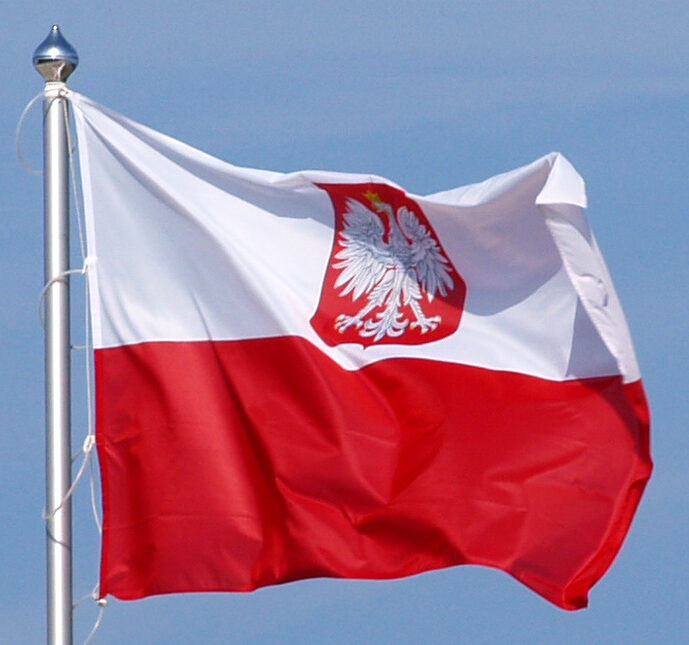
1947 Naval Plan:
In 1947 a Naval Estimate was prepared for the construction of a 42,000 ton fleet (eighteen submarines, twenty-four MTBS, nine escorts, forty-four patrol craft, sixty-six minesweepers), over 20 years. This programme reflected adoption of the Soviet naval doctrine of that time, confining the navy to flanking large army progression inland, while making extensive use of minefields and reinforced by coastal artillery, while the remainder would prey on enemy communications with small combatant covered by naval aviation. The 1947 estimate exceeded what was possible from a war-shattered economy however.
WW2 legacy ships
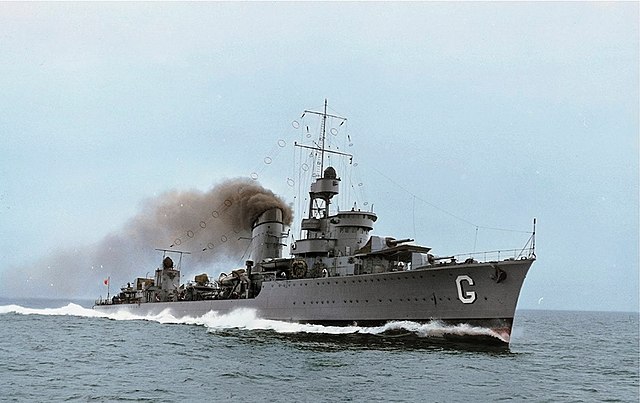
ORP Blyskawica, modernized 1949-50 and 1957-61, Polish flagship until the late 1960s
- -Destroyer Burza (Wicher class 1929), BU 1977
- -Destroyer Blyskawica (Grom class 1936), preserved 1976
- 3 Wilk class subs (Rys, Wilk, Zbik) BU 1952-54
- -Sep (Orzel class 1938), stricken 1969
- 4 Jakoslka class minesweepers, stricken 1970
- 9 Transferred T371 boat, stricken 1959
- 2 D3 class MTBs stricken 1959
- 11 OD-200 sub chasers, stricken 1959
- 6 misc. ships stricken 1957-1961
- 6 former German MFP landing ships, stricken 1957-1963
- 1 former Italian MS landing ship acq. 1950, BDD 4, ODD 4, stricken 1963
- 11 LCT-5 acq. 1950, stricken 1957-60
- 3 LCM-3 acq. 1950, stricken 1960s
- 4 YMS type minesweepers purchased 1948, stricken 1955-57
1950 Naval Plan:
It was substituted by a 1950-55 plan for the construction, still modest, of just five MTBS, five patrol craft, five minesweepers and five coastal minesweepers.
This plan was abandoned in 1950 by the Soviet officers in command, who saw the Polish Navy as a local detachment of the Soviet Baltic Fleet.
1951 Naval Plan:
In 1951 the ‘Plan for Reinforcing Defences’ was authorized. It concerned alltogether the modernisation of the army, air force and AA defence, but the navy was confined to defending only the main base at Gdynia (used by the USSR, with permanently based ships) and limited service of suitable ships. As a temporary measure, a landing craft flotilla was formed which comprised former German and US boats, as the old destroyer Burza, duly modernised.
1955 Naval Plan:
The necessity of replacing ageing naval craft was only acknowledged four years later in the ‘Military Development Plan for 1955-60’, which proposed increasing the navy to five destroyers, nine frigates, twelve submarines and ninety-six MTBs (all to be imported from the Soviet Union), in addition to sixty minesweepers and eight submarine chasers built locally.
This enforced rearmament programme however was forced upon a still flegding economy, provoking a sharp decline which will provoke an acute food shortage in 1952. Only the easing of tension at the Geneva conference of July 1955 and internally after the 1956 Poznan riots, made it possible to halt the program. The wihtdrawal of certain command posts and symbolically, the return of Polish Military Uniforms were authorized. The initial military expansion program was halted, and at this point, the Polish navy had already purchased two Skoriy class destroyers, six ‘MV’ type submarines, twenty-seven fast craft. In addition the construction locally under licence of twelve ‘T43’ type and seven ‘TR40’ type minesweepers were undergoing.
1961 Naval Plan:
The Khrushchev regime forced Poland to adopt a new armament programme, approved in March 1961 and planned an extension over seven years, with a destroyer flotilla of three ships, a missile boat flotilla of seven boats, a submarine brigade of seven boats, an MTB brigate of nineteen, and a sub-chaser flotilla of eight boats, plus a minesweweepers flotilla of twenty-four, a riverine flotilla of seven boats, plus a landing brigade of twenty-eight ships. This was a lot to bear, but as a measure of appeasement it was also decided these ships would be built locally, the minesweepers, sub-chasers, MTBs, landing ships and auxiliaries, like in East Germany at the time. The desired force at least on paper was only achieved in the late 1960s, but numerous earlier vessels already needed a replacement.
The decline of Polish planned economy, burdened with excessive military expenditures and lack of modern technology led to social unrest in December 1970. The ailing economy caused delays in replacement and was made only worse by the attitude of the Polish ministry of defence, emphasised a stronger development for better integration into the Warsaw Pact strategic planning.
Therefore the basic combat potential planned for the Polish Navy in 1961 was never reached, and at the end development of the decade as follows:
-Single ‘Kotlin SAM’ guided missile destroyer
-Four “Whiskey V’ class submarines
-50 small surface combatants (MTBs, sub-chasers)
-33 landing ships +24 imported, ex-USSR
-An ageing, small naval aviation division.
Thus the Polish Navy, which had been the largest of the non-Soviet naval forces lost its position to East Germany in the early 1980s.
1980 naval plan:
The 1980 program focused on locally-built small surface combatants: FACs, MCVs and assault craft all with imported Soviet armaments and sensors. However at that stage, its development, largely was plagued by strikes, notably at Gdansk and Gdinya. After the withdrawal of the 30 years old destroyer Warsawa in 1986, the Poles were unable to contribute to the Warsaw Pact joint Baltic squadron until the arrival of the “Kashin mod” missile destroyer lend by USSR in 1988. It was the first for this Navy. Construction of FAC/M only started with difficulties by 1988, in cooperation with East Germany, and only the landing craft program was pursued nore vigorously, even though only five Lublin class have been completed.
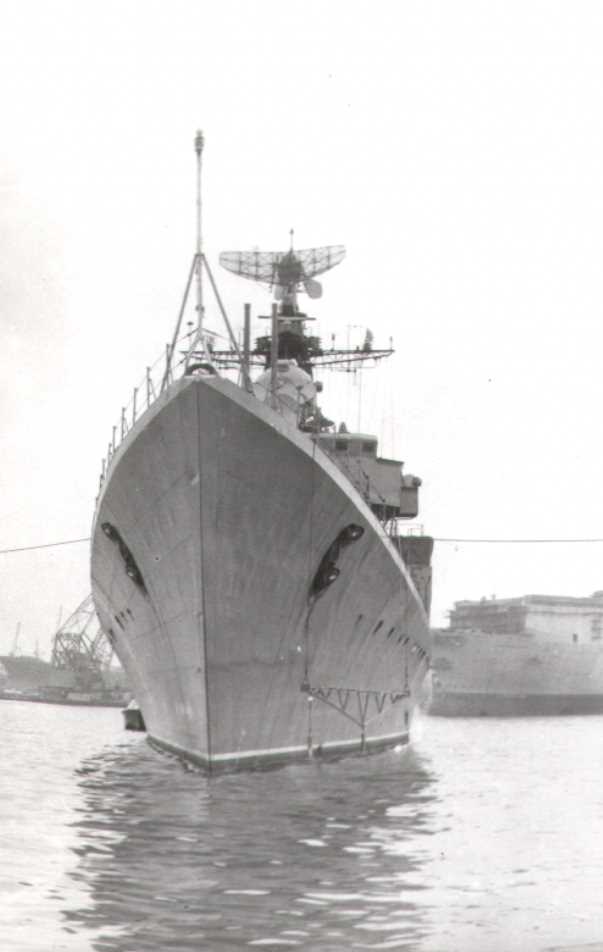
ORP Warsaw, flagship, Kotlin SAM II type.
Additional purchases from the Soviet Union proved a considerable strain on the economy, but included four “Tarantul class” corvettes FAC/M replacing the old OSA I boats. Noteworthy was the transfer of the submarine Orzel in 1986 (sole Kilo class), and the smaller and cheaper Foxtrot class followed, with the Wilk and Wicher.
Following economic restraints brought about as a result of this program, the Polish economy once again showed sign of crisis. Hardship suffered by the people caused much social unrest in the summer of 1988, and the Communist Party, discouraged by Moscow’s unwillingness to compromise its new image by supporting an unpopular regime, decided to negotiate with leaders of the hitherto illegal opposition. This resulted in the peaceful removal of communist rule after elections in June 1989, and triggered a similar process in neighbouring countries.
Poland was the first country to join the ‘Partnership for Peace’ programme, and the most eager to join NATO, making the best possible use of the time given by the temporary weakness of the Russian Empire. An estimate to create a balanced and independent naval force was drawn up, and provided for five submarines, twelve ASW escorts, eighteen FACs, twenty MCVS and a naval aviation of eighty aircraft. This programme was however still well beyond the capacity of the Polish economy, driving forcefully from the centralised system to the open market.
The Polish Navy in 1995 comprised on paper at least, three submarines, a single missile destroyer, a surface escort, thirteen TACM, nineteen sub-chasers, twenty-four mineweepers and the landing ships. However most of these ships were without practical military value eiher because of obsolescence or lack of modern weapon systems, not even talking about NATO standards total incompatibility. The only units pratical value came from the single Kilo class submarine, the four Tarantul class corvettes, the five landing ships, the sixteen MCVS.
The Coast Guard was separated from the navy in 1991. The fleet headquarters are at Gdynia, and bases were at Gdynia Oksywie, Hel, Swinoujscie and Kolobraeg. Naval aviation comprised by then the 34th Fighter Wing (at Gdynia Babie Doly) 38 MIG-21 fighters, 4 TS-11 Iskra training aircraft, two AN-2 transport planes and two Mi-2 ‘Hoplite’ helicopters, and the 7th Training Wing irowice with fifteeri TS-11, eight An-2 and two An-28 bombers, an Helicopter Squadron at Darlowo, with fourteen Mi-14 ‘Haze’ and Mi-2 ‘Hoplite’, the 18th Despatch and Rescue Squadron with four RW Anakonda, three W-3 Sokol, ten Mi-2 helicopters and two An-28.
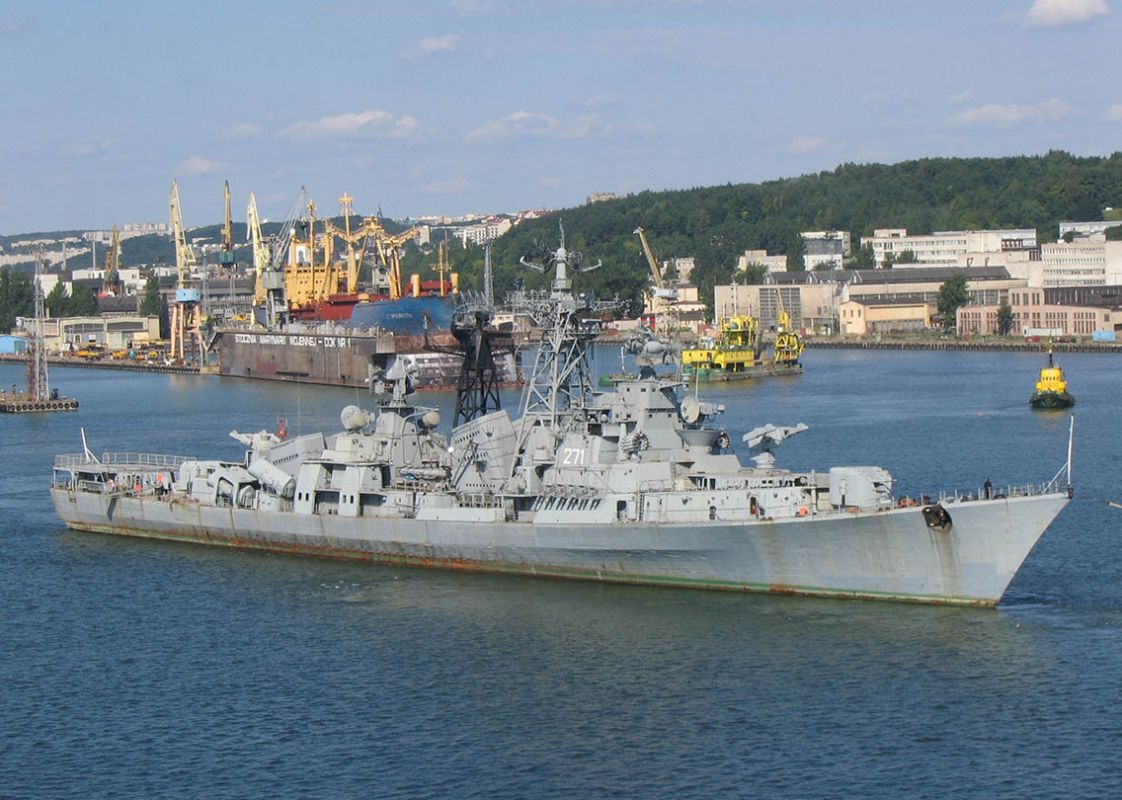
Warsawa ii, credits magnum-x.pl
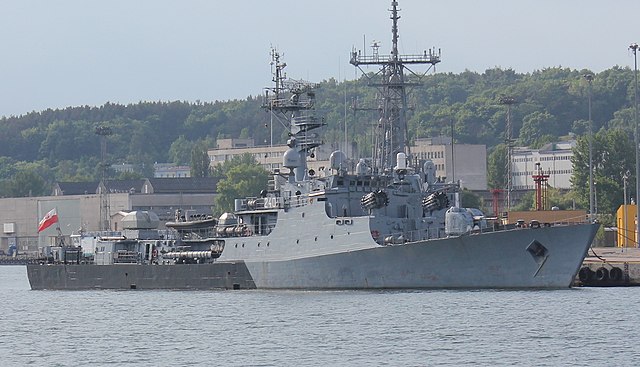
ORP Kaszub, the only Polish coldwar Corvette class, limited to the lead ship.

ORP Wilk, a Project 641 (Foxtrot) in the 1990s
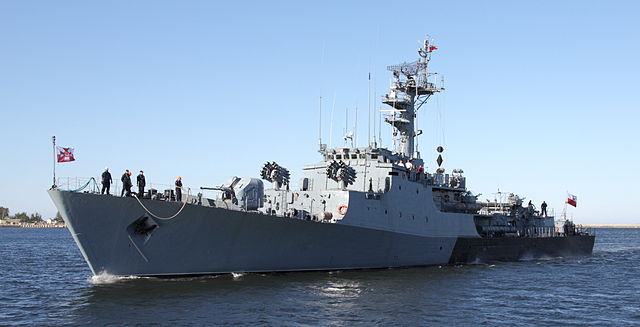
ORP Kaszub corvette in Gdynia
ORP Orzeł of the Whiskey class (cutaway)

ORP Grom, Orkan class Missile corvettes
Missile Corvette ORP Metalowiec in Gdynia (Tarantul class)
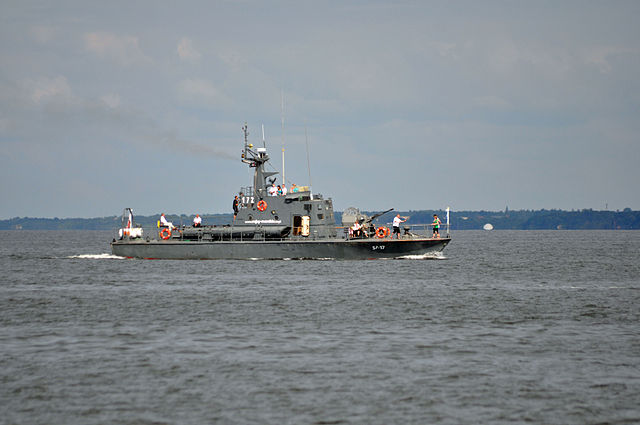
Pilica class patrol crafts
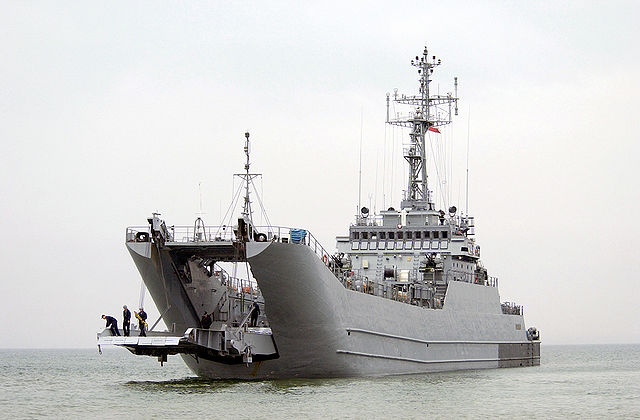
ORP Poznan of the Lublin class LSTs
List:
Grom class destroyers (Skoryy class) 1957, stricken 1967
Warsawa Kotlin SAM acq.1970, stricken 1986
Warsawa Kotlin Mod acq.1988, discarded 2000s
Kaszub Corvette (Balcom 6) 1986
MV class subs (1948-52), delivered 1954, stricken 1970
4 Whiskey class subs (transferred 1962-69), stricken 1990
Orzel (Kilo class) acquired 1986, extant
Wilk class (Foxtrot) acquired 1987-88, extant
Gdynia class landing ships (Polocny A) 1965-68, discarded 1990s
Lenino class landing ships (Polocny B) 1968-71, discarded 1990s
Lublin class LSTs (Balcom 11) 1989-92, extant.
Command ship Grunwald (Polocny C) 1972 (+27 exported)
Eichstaden class LCs (LCP(L) type 1962, stricken 1990s
Marabut class LCs 1973 stricken 1987
3 Deba class LCs (1987), extant
‘P6’ type FAC(T) (1956) discarded 1970s-80s
OSA I type FAC(M) 1963-69, discarded 1990s
Blyskawiczny experimental FAC(T) 1958, discarded 1970s
Bitny class FAC(T) (NATO Wisla) 1962, discarded 1984
Project 665 FAC(M) 1977, construction abandoned.
Tarantul class missile corvettes delivered 1983-89
Orkan class FAC(M) (Balcom 10) 1990s
-Sub-chaser Bitny 1952, experimental.
Kronstadt class sub chasers (delivered 1955-57), stricken 1969-72
Oksywie class large patrol craft (Op 201 type) 1957, stricken 1980
Gdansk Large Patrol Crafts (1959), discarded 1980s
LPC/SC (1965-72) extant 1990s
Kaper class patrol craft (SKS 40 type) built 1991
Pilica class PC/SC 1971-74/1973-83, extant
KP 100 class inland patrol boats (1953-54), stricken 1970s
Wiloska class coastal patrol craft (1970s), extant 1990s
T43 licence bult minesweepers 1955-62, stricken 1987-93
Krogulec class minesweepers 1962-67, stricken 1990s
GRP hull Goplo class minesweepers 1981-85, extant
Mamry class (improved Goplo) 1990s
Leniwka class experimental coastal mineswpeers 1984
‘TR40’ type river minesweepers 1954-56, stricken 1969-70
‘K8’ type minesweeping boats 1956-60, stricken 1986
The modern Polish Navy
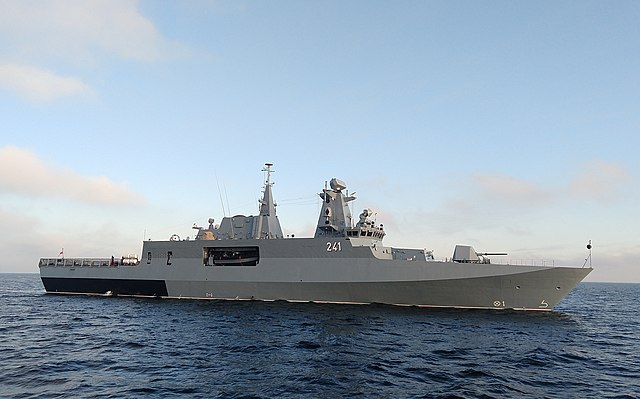
ORP Ślązak, Gawron-class offshore patrol vessel (OPV). The program was cancelled and instead Babcock’s Arrowhead 140 frigates will be built.
Note: The modern Polish Navy will be the object of a standalone article in the future.
Poland’s entrance into NATO greatly changed the structure and role due to its integration, new standards, and gradual shift to western equipments and procedures. Most of Naval High Command focused on coastal defense and Baltic Sea Operation, with a mindset for integration within the international NATO operations. Modernization programs consisted in the acquisition of two Oliver Hazard Perry-class frigates while the Naval air arm acquired several SH-2G Super Seasprite helicopters. The bulk of the navy remains its sole Kilo-class attack submarine ORP Orzeł.
The Polish Navy took part in many joint operations and by 1999 Gdynia hosted the while Baltic NATO submarine force, “Cooperative Poseidon” while a joint American-Polish submarine training (“Baltic Porpoise”) started.
In the 2020s modernization is going strong, with an initial 2010 9 billion zloty program, reduced in 2012 to 5 billion, causing delays and cancellations. The 2017 strategy called for 13 billion zloty and 22 new warships, plus larger warships unsuitable for the Baltic Sea while expanding the life of one of OHP-class frigate.
12 new ships are to be commissioned before 2026. The plan was updated in 2017 for 22 new vessels:
-Three coast-defense vessels (Miecznik class, 2600 tons)
-Three patrol/mine countermeasure vessels (Czapla class, 1700 tons)
-Six tugboats, two tankers, two rescue ships, one ELINT, one logistical support ship, one joint support ship.
On 2 July 2015, ORP Ślązak was launched, the first new Polish-built Navy ship in 21 years.
In 2022, Babcock announced selection of its Arrowhead 140 design for the Miecznik program of large multi-mission frigates.
As for coastal force, Poland acquired no less than 36 Swedish RBS15 Mk3 and 50 (50/74) Norwegian Naval Strike Missiles.
The Navy’s helicopter fleet planned in 2017 up to eight ASW/SAR units.
The Gawron-class corvettes program was cancelled and unique ship converted as a patrol vessel.
In 2013 the Coastal Missile Division had 12 Naval Strike Missiles, two TRS-15C radars.
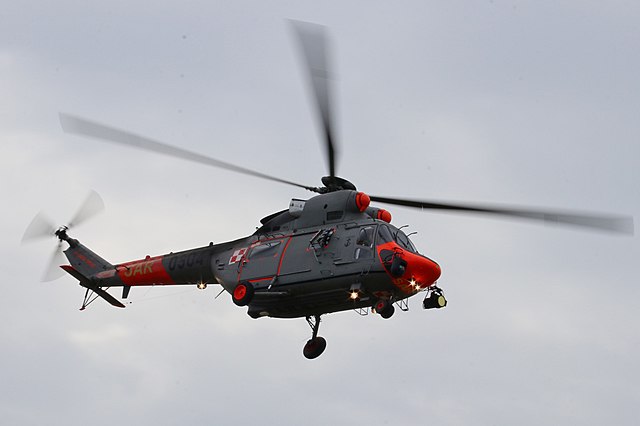
Just as a quick taste, as of 2023, the Polish Navy underwent the same massive ramping up as other forces (Air Force and Army), albeit more moderate, as immediate bellicose neighbours:
48 ships, including: 3 submarines, 2 frigates, 2 corvettes, 3 fast-attack craft, 21 mine destroyers, 5 mine layers, 4 salvage ships, 6 auxiliary ships and 2 training vessels. For the naval air branch, 40 naval aircraft (10 maritime patrol planes, 4 transport planes, 10 search air-rescue helicopters, 12 anti-submarine warfare helicopters, 4 transport & training helicopters).
 Polish Destroyers
Polish Destroyers
 Legacy destroyers: Burza, Blyskawica
Legacy destroyers: Burza, Blyskawica
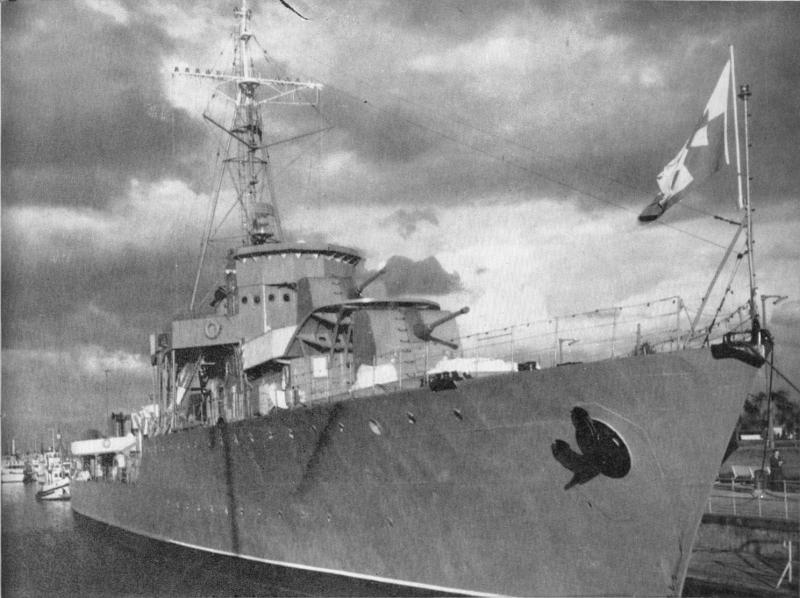
Burza as museum ship in Gdynia, in the 1960s
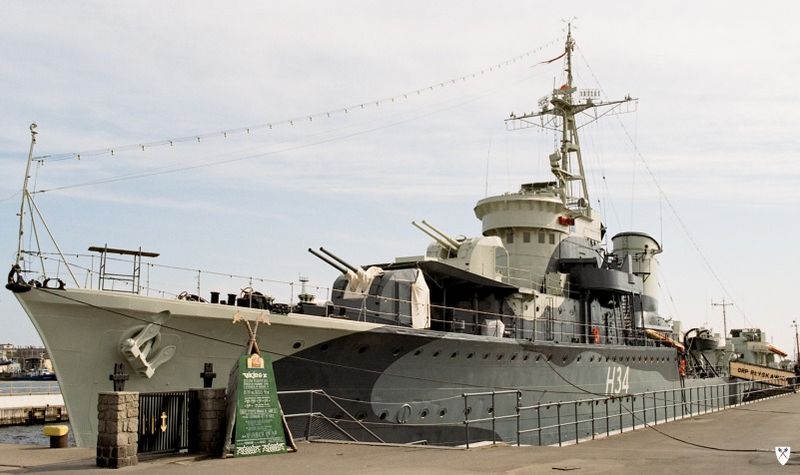
Blyskawica as a museum ship today
ORP Burza:
The former Wicher class came back in Poland after WW2 in 1951, towed to Gdynia in July. She was overhauled and re-entered service in 1955 wittout significant modernization andn thus, ended in 1960 as a museum ship and eventually scrapped in 1977.
ORP Blyskawica:
After herreturn to Poland she served as training ship, cruised with officer cadets and visited Leningrad. She had a frst update in 1951-52 with her 4-in replaced by Soviet B-34 100 mm gun barrels in the same mountings and Soviet 37 mm AA guns (four twin, two single mountings) plus Soviet triple 533.4 mm torpedo tube mount and radar, a copy of British type 291 radar set. In September 1955 with ORP Burza she visited Portsmouth. July 1957 she visited Stockholm. Her second modernization in 1957–1960 modernized her propulsion, radio and electronic equipment plus new radar and upgraded B-34 U 100mm guns.
She visited Helsinki in 1961, Greenwich in 1962, Copenhagen in 1963, Chatham, in 1964, Narvik, in 1965. On August 9, 1967 she had a high-pressure steam pipe rupturing (seven sailors killed). It was decided not to repair her and instead she became a static AA defense ship in Świnoujście from June 1969. By May 1976 she became a museum ship in Gdynia, still her with us today.
 Grom class destroyers (1957-67)
Grom class destroyers (1957-67)
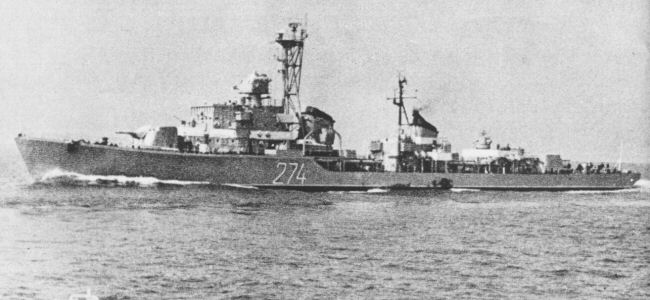
ORP Wicher of the Skoryy type
Two Skory class destroyers, transferred from the Baltic Fleet. No notable event or modernization. Pennants were changed to 273-274 in 1960 and they were discarded in 1975.
 c (i) KOTLIN SAM (1970-1986)
c (i) KOTLIN SAM (1970-1986)
ORP Warszawa was a Kotlin-class destroyer from Leningrad, originally Spravedlivy. She was transferred to the Polish Navy in 1970 and served until 1986 when decommissioned. No change, she was “stock”. See the full Kotlin class article
 ORP Warsawa (ii) KOTLIN M (1988-2016)
ORP Warsawa (ii) KOTLIN M (1988-2016)
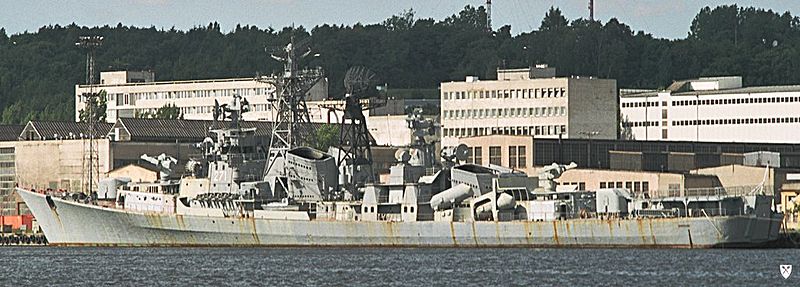
ORP Warsaw (iii) of the Kashin Mod class in 2004
Build at 61 Communards Shipyard and laid down on 15 November 1966 as Smelyi, Launched on 6 February 1968, Commissioned on 27 December 1969, as part of the CKB-53 class (NATO Kashin-class) and among the largest destroyers at 4,950 tonnes she was used as a multi-purpose vessel with an almost full auto armament. Modernized 1972-1974 to the 61MP standard (NATO Kashin mod) between armament, radar and fire control systems. By 1987 she was leased by Poland as replacement for the previous worn out Warszawa. In 1992-1993 she was permanently transferred in exchange for Soviet debts in Gdynia.
16 years later she was discarded and sold back to USSR and sent to the reserve, sold again for scrap at Gdańsk.
 Polish Missile ships
Polish Missile ships
 ORP Kaszub (Balcom 6, Project 620) (1986)
ORP Kaszub (Balcom 6, Project 620) (1986)
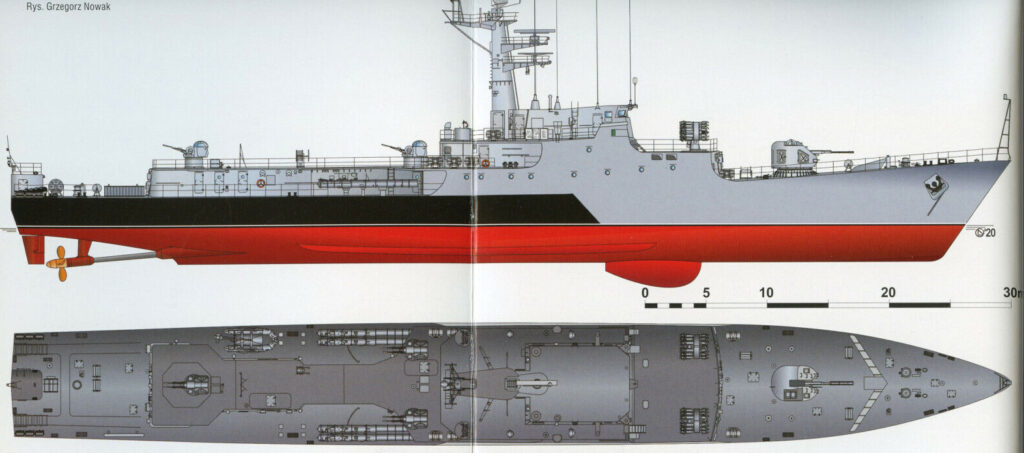
2-views Profile by Grzegorz Nowak, dedicated book on the Kaszub
Work on the first Polish Frigate started in 1971 but only resulted in a construction from 1984, laid down at Stocznia Północna in Gdańsk on 9 June, launched on 11 May 1986, and after modifications, was commissioned on 15 March 1987, and not fitted with her intended armament, the 9K33 Osa (NATO SA-N-4 Gecko) SAM as unreliable on small platforms. Her main gun armament was also removed to preserve stability. The initial plan was for 7 ships but the end of the cold war saw her as being unique. She saw little operational and was in the end loaned to the Polish Border guard from 1990. By September 1991 she at last receiced a AK-176 76 mm (3.0 in) gun turret forward and by October 2016 a single Oerlikon 35 mm gun AM-35 Tryton system was mounted.
She diplaced 1,051 long tons standard/1,183 long tons (1,202 t) full load for 82.34 x 10 x 4.9 m (270 ft 2 in x 10 ft 2 in x 16 ft 1 in). She was powered by four Cegieski-Sulzer AS 16V 25/30 diesels in a CODAD arrangement on two shafts for a total output of 12.42 MW (16,660 shp), top speed 27 kn (31 mph; 50 km/h), Range 3,500 mi (3,000 nmi; 5,600 km) at 14 kn (16 mph; 26 km/h), a crew of 67. The electronics suite comprised a MR 302 Air/surface search (NATO Strut Curve), a Nogat SRN 7453 surface search radar, an SRN 441XT Navigation radar, a MG 322T hull mounted medium frequency active search sonar and an MG 392M high-frequency dipping sonar.
The final armament comprised an AK-176 76 mm gun, AM-35 Tryton 35 mm cannon completed by two twin ZU-23-2M Wrobel 23 mm, two 9K32M Strela 2M SAM, two twin 533mm (21 in) torpedo tubes, SET-53M torpedoes and two RBU-6000 anti-submarine rocket launchers.
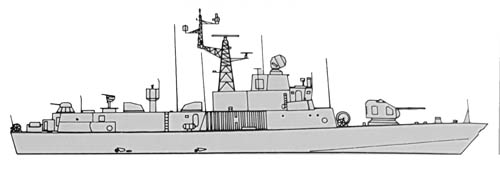
The Orkan class, projekt 660 (NATO Sassnitz class) were three fast attack craft (FAC) in service from 1992 but studied during the cold war. The original project was East German but after the Unification of Germany, unfinished hulls were bought by the Polish Navy from VEB Peenewerft shipyard, Wolgast and completed at the Northern Shipyard in Gdańsk. In 2006 RBS-15 Mk 3 anti-ship missiles were ordered and from 2007, RBS-15 Mk 2 were installed as interim. RBS-15 Mk 3 missiles were fitted by 2014. Two had a mid-life refit in 2015 Orkan. The clas comprised 421 Orkan (September 1992), 422 Piorun (11 March 1994) and 423 Grom (28 April 1995). Names are “Hurricane”, “Thunderbolt” and “Thunderclap” after WW2 destroyers.
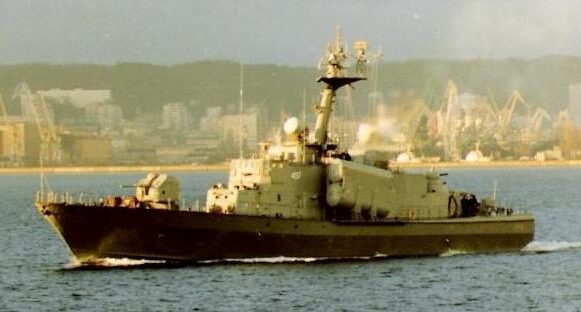
ORP Rolnik underway off Gdynia
Poland once operated ORP Górnik (434), ORP Hutnik (435), ORP Metalowiec (436), and ORP Rolnik (437), built at 341 Yard Rybinsk, as replacement for the OSA, as Project 1241RE in 1982-87, delivered in 83-84 and 87-89, all now decommissioned but still active in the late 1990s.
 Polish Submarines
Polish Submarines
 MV class subs (1948-52)
MV class subs (1948-52)
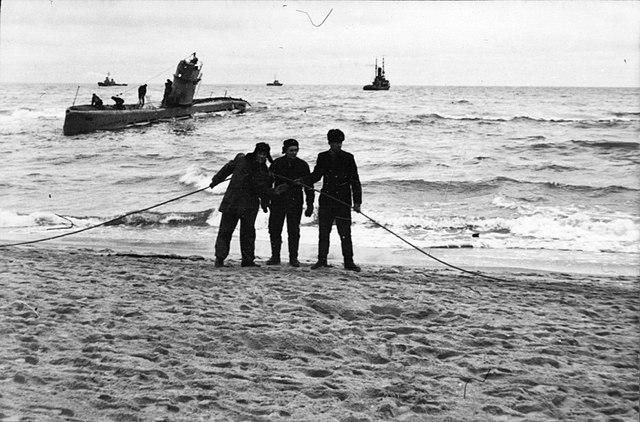
Six submarines delivered in 1954, stricken 1970. Exact type M or “Malyutka” (1933) of the last serie. They were built in USSR in 1948-52 and delivered to Poland in 1954 with a second batch in 1955. They were named Kaszub, Kujawiak, Kurp, Krakowiak, Mazur, Slasak. One ran aground but was repaired. Their 45 mm gun was removed in 1958-59.
 Whiskey class subs (1962)
Whiskey class subs (1962)

Four Soviet-built submarines of Project 613 were transferred to Poland in 1962-69, Identical to Whiskey V types, built in Leningrad. They were the ORP Orzel, Sokol, Kondor, Blielik, stricken 1983, 87, 86 and 89 respectively.
 ORP Orzel (Kilo class, 1986)
ORP Orzel (Kilo class, 1986)
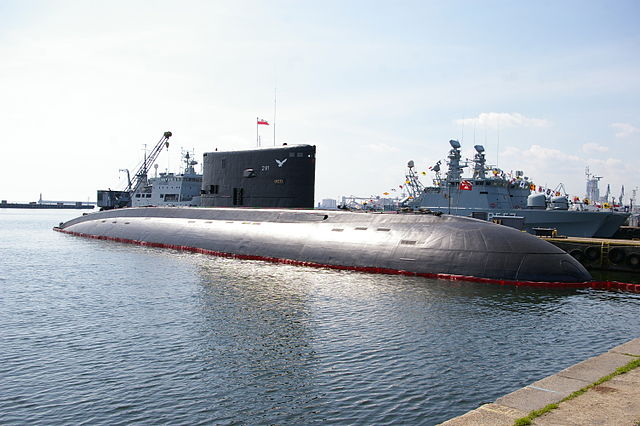
ORP Orzeł (291) was a single Project 877E (NATO Kilo-class) submarine built by Krasnoe Sormovo in Gorky, commissioned on 29 April 1986 at Riga and transferred in June to Gdynia, renamed, recommissioned and assigned to the 3rd Flotilla in Gdynia. Today, she is the oldest Kilo-class submarine in active service.
 ORP Wilk (Foxtrot class, 1987)
ORP Wilk (Foxtrot class, 1987)

ORP Wilk of the Foxtrot type
Two Project 647 boats, built in Sudomekh of Leningrad, pennant 292, 293, acquired in 1987-88 after the cancellation of more Kilo class orders to make up for a three subs fleet at alower cost. The clas comprised Wilk and Dzik. The former was fully upgraded in 1993. She also travelled 47000 nautical miles and dived 626 times. She was stricken in 2003. Dzik was scrapped in May 2005, but her conning tower was preserved at Gdynia.
 Polish Patrol Ships
Polish Patrol Ships
 Pilica class PC/SC 1971-74/1973-83
Pilica class PC/SC 1971-74/1973-83
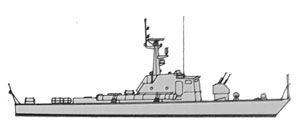
PC (Coastal Patrol Boats) built in Gdynia: 28.9×5.8×1.4 m, disp. 86/93 t, 3x M-50F-5 Diesels, top speed 28 kt, Crew 12, SRN-301 radar, Foal Tail (MG-339M Shelon) sonar, VDS, armed with 25mm/60 Twin Gun, SET-53ME Torpedoes.
 Polish Minesweepers
Polish Minesweepers
ORP mewa of the Krogulec class minesweepers
Orlik, Krogulec, Jastrząb, Kormoran, Czapla, Albatros, Pelikan, Tukan, Flaming, Rybitwa, Mewa, Czajka N°613-624.
Also called Orlik class, Porject 206F, a purely Polish designed and built, successful class of minesweepers, ideal for Baltic conditions. Construction was scheduled for 1957. Compared to Project 254 they were more compact with extra close range weapons. There were delays for the delivery of Fiat engines which reduced the order from 14 to 12 ships. Flush deck, relatively low freeboard, knucled bow.

Specs:
Displacement 426/550t, 58.2×7.97×2.14, 2 shafts Fiat 2312SS diesels, 3,540bhp 18.4kts 45ton oil, 200 nm/17 kts, armed with three twin 25mm/80 2M-3M, 2 DCR (12 DCs), 8 AMD-1000 or 16 obr. 1939 mines, MT-2 mechanical, TEM-52M magnetic, BGAT-2 acoustic minesweeping geard and Don radar, Tamir-11M sonar, crew 49.
In the 1980s the three twin cannons were replaced by two quadruple Fasta-4M SAM (16 9M32M Strela-2M) MANPADS, and one or two 23mm/87 autocannons and one Strela-2M SAM plus a Polish-built ZU-23-2MR Wrobel-2MR. They were discarded for the first batches in 1989-1993 (613-619). Those who survived, Mewa, Czajka in 1999 and Flaming in 2001 gained a and Ukwial minehunting USV, a TEM-PE-2M magnetic minesweeping gear as well as a decompression chamber for mine-disposal divers but also 10 sonobuoys, a wetern-provided Decca BridgeMaster-E radar, as well as the SHL-100AM and SHL-200M-1 sonars, the PIT Bren ECM suite, and six 9-tube 81mm decoy launchers. They had also their diesels replaced by two Sulzer-Cegielski ATL25/30 (3,740hp) and remained in service until 2000, 2002 the last in the 2020s, statuts uncertain as of today.
 Polish Amphibious Ships
Polish Amphibious Ships


3 LCs (1987), Project 716 built at Stocznia Marynarki Wojennej, Gdynia to replace project 709 boats. 12 planned, reduced to 4, but 3 completed.
Specs: 176t, 37.2×7.27×1.67, 3 shafts M-401A diesels 3000 bhp 20kts 9tons oil 500nm/16 kts. Crew 12. Twin 23mm/87 ZU-23-2 Wrobel-1, 2x PW-LW LCRL, 50 troops, 20 t cargo/3 vehicles, SRN-207A radar, later SRN-207A and Sperry radars in 2010. Extant today.
Read More
Couhat, Jean Labayle and A.D. Baker III. Combat Fleets of the World 1986/87. NIP
Gardiner, Robert and Stephen Chumbley. Conway’s All The World’s Fighting Ships 1947–1995.
graptolite.net/ Dzik
nowiny24.pl/
myvimu.com/ orp-wilk-okret-podwodny-nr-031
web.archive.org http://zyrardow.pttk.pl/bryza/pod.htm
trojmiasto.pl/ ORP-Wilk-n9492.html
the warsawas on destroyer lore, oryxspioenkop.com










 Latest Facebook Entry -
Latest Facebook Entry -  X(Tweeter) Naval Encyclopedia's deck archive
X(Tweeter) Naval Encyclopedia's deck archive Instagram (@navalencyc)
Instagram (@navalencyc)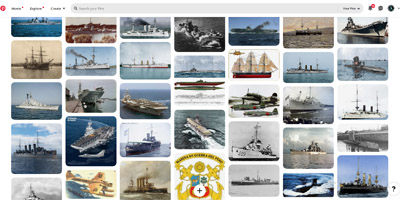

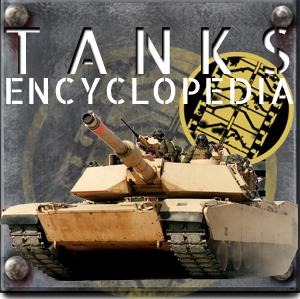
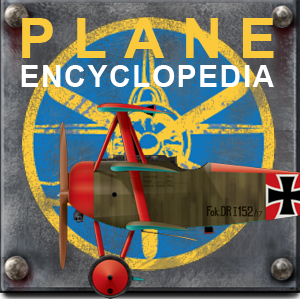
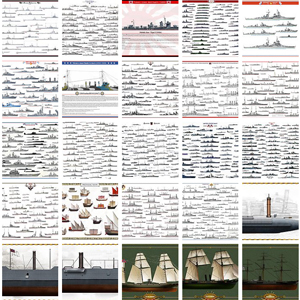
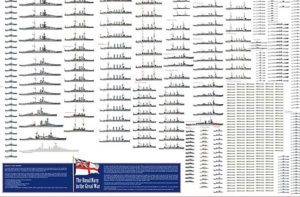
 French Navy
French Navy Royal Navy
Royal Navy Russian Navy
Russian Navy Armada Espanola
Armada Espanola Austrian Navy
Austrian Navy K.u.K. Kriegsmarine
K.u.K. Kriegsmarine Dansk Marine
Dansk Marine Nautiko Hellenon
Nautiko Hellenon Koninklije Marine 1870
Koninklije Marine 1870 Marinha do Brasil
Marinha do Brasil Osmanlı Donanması
Osmanlı Donanması Marina Do Peru
Marina Do Peru Marinha do Portugal
Marinha do Portugal Regia Marina 1870
Regia Marina 1870 Nihhon Kaigun 1870
Nihhon Kaigun 1870 Preußische Marine 1870
Preußische Marine 1870 Russkiy Flot 1870
Russkiy Flot 1870 Svenska marinen
Svenska marinen Søværnet
Søværnet Union Navy
Union Navy Confederate Navy
Confederate Navy Armada de Argentina
Armada de Argentina Imperial Chinese Navy
Imperial Chinese Navy Marinha do Portugal
Marinha do Portugal Mexico
Mexico Kaiserliche Marine
Kaiserliche Marine 1898 US Navy
1898 US Navy Sovietskiy Flot
Sovietskiy Flot Royal Canadian Navy
Royal Canadian Navy Royal Australian Navy
Royal Australian Navy RNZN Fleet
RNZN Fleet Chinese Navy 1937
Chinese Navy 1937 Kriegsmarine
Kriegsmarine Chilean Navy
Chilean Navy Danish Navy
Danish Navy Finnish Navy
Finnish Navy Hellenic Navy
Hellenic Navy Polish Navy
Polish Navy Romanian Navy
Romanian Navy Turkish Navy
Turkish Navy Royal Yugoslav Navy
Royal Yugoslav Navy Royal Thai Navy
Royal Thai Navy Minor Navies
Minor Navies Albania
Albania Austria
Austria Belgium
Belgium Columbia
Columbia Costa Rica
Costa Rica Cuba
Cuba Czechoslovakia
Czechoslovakia Dominican Republic
Dominican Republic Haiti
Haiti Hungary
Hungary Honduras
Honduras Estonia
Estonia Iceland
Iceland Eire
Eire Equador
Equador Iran
Iran Iraq
Iraq Latvia
Latvia Liberia
Liberia Lithuania
Lithuania Mandchukuo
Mandchukuo Morocco
Morocco Nicaragua
Nicaragua Persia
Persia San Salvador
San Salvador Sarawak
Sarawak Uruguay
Uruguay Venezuela
Venezuela Zanzibar
Zanzibar Warsaw Pact Navies
Warsaw Pact Navies Bulgaria
Bulgaria Hungary
Hungary

 Bundesmarine
Bundesmarine Dutch Navy
Dutch Navy Hellenic Navy
Hellenic Navy Marina Militare
Marina Militare Yugoslav Navy
Yugoslav Navy Chinese Navy
Chinese Navy Indian Navy
Indian Navy Indonesian Navy
Indonesian Navy JMSDF
JMSDF North Korean Navy
North Korean Navy Pakistani Navy
Pakistani Navy Philippines Navy
Philippines Navy ROKN
ROKN Rep. of Singapore Navy
Rep. of Singapore Navy Taiwanese Navy
Taiwanese Navy IDF Navy
IDF Navy Saudi Navy
Saudi Navy Royal New Zealand Navy
Royal New Zealand Navy Egyptian Navy
Egyptian Navy South African Navy
South African Navy






























 Ukrainian Navy
Ukrainian Navy dbodesign
dbodesign